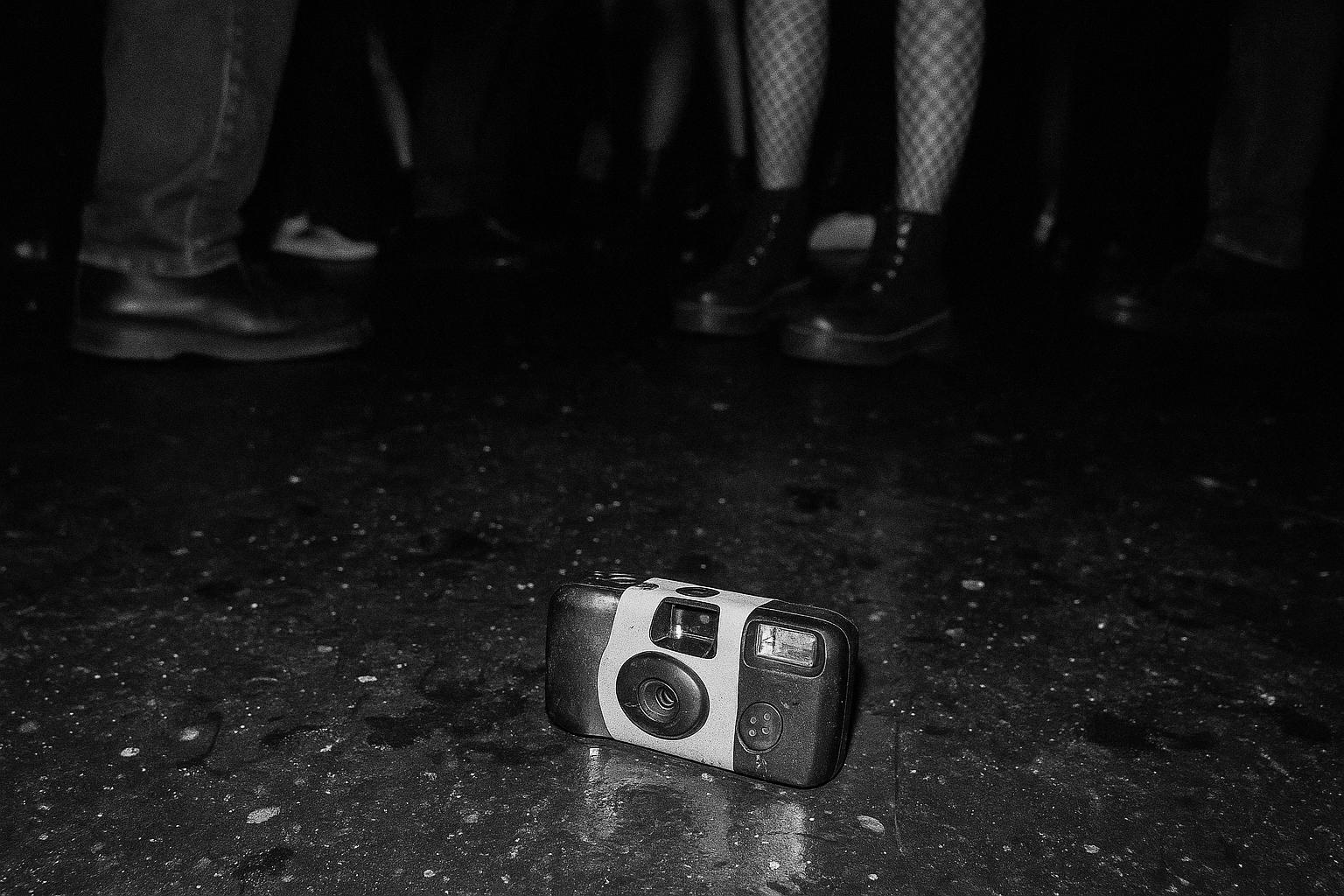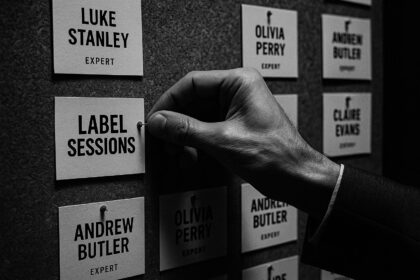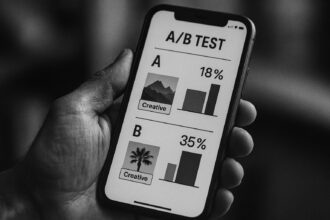The retrospective tag ‘indie sleaze’ has become shorthand for a neon‑lit era, but it flattens a collage of distinct sounds — dance‑punk, electroclash, garage rock, post‑punk revival, nu‑rave, bloghouse and art‑punk — that together shaped the period’s fashion and club culture. Its 2020s revival, driven by TikTok, Tumblr and archival feeds, both romanticises and simplifies a messy scene whose legacy survives in contemporary music and online curation.
It is tempting, when looking back at the messy, neon-lit years around the turn of the millennium, to shoehorn a dozen overlapping scenes into one tidy label. The phrase “indie sleaze”—which recent cultural retrospectives say began circulating among trend-watchers and social‑media curators in 2021 and was popularised by an Instagram account of the same name—has become shorthand for that world: thrift-store glamour, late‑night hedonism, grainy party photography and a soundtrack that mixed raw guitar rock with club-ready electronics. According to a feature in the Belfast News Letter, searches for the term spiked in early 2022 as younger audiences and nostalgic participants alike began to relabel and romanticise a pre‑social‑media aesthetic.
That revival has been driven as much by platforms as by memory. Gen Z users rediscovered the look through TikTok and Tumblr, while archival Instagram feeds and music blogs reintroduced the clothing, photographers and throwaway club culture that defined the era. The result was less the resurrection of a single, coherent movement than the assembling of a shared visual and sonic vocabulary from scenes that at the time often operated in parallel: Shoreditch and Hoxton nights, student clubs across the UK, downtown New York post‑punk raves and festival circuits that trafficked in artifice and spectacle.
But the catch‑all term obscures how musically diverse those years were. The period contained several distinct currents—on record and on the dancefloor—each contributing a different temperament to what people now call indie sleaze. Understanding that variety helps explain why, when the phrase was revived, it felt both familiar and incomplete.
At the centre of the soundscape was dance‑punk (sometimes called discopunk): a revivalist hybrid that reached back to late‑1970s post‑punk and disco to produce angular guitars, propulsive basslines and rhythms built for rooms that might just as easily host a mosh as a rave. Bands such as LCD Soundsystem, The Rapture and !!! married art‑school irony to a nightclub beat, and critics and historians have noted the genre’s role in bringing indie crowds into clubs while opening electronic audiences to guitar‑based performance. The genre’s dual allegiance to rock and the dancefloor made it a linchpin for the era’s nightlife culture.
Running alongside that was electroclash, a deliberately theatrical throwback to 1980s synth‑pop and new wave with a trashy, provocative edge. Contemporary reporting at the time captured its festival‑friendly spectacle and its polarising persona: promoters and some performers embraced the kitsch and shock value, while others viewed the hype with scepticism. Early‑2000s profiles show electroclash’s emphasis on performance, irony and a visual identity as important as its sound—an aesthetic that fed directly into the more artful corners of indie sleaze.
On the guitar side, garage rock supplied the swagger. Acts such as The Strokes, The White Stripes and The Libertines stripped rock back to raw riffs, ragged production and a wear‑it‑like‑a‑badge nonchalance that made being in a band look easy and dangerous at once. That revival of 1960s‑inspired immediacy made it cool to play guitar again and helped fuel a wave of bands who prized attitude over polish.
A darker, more cerebral counterpart came from the post‑punk revival. Drawing on the moody grooves and taut arrangements of late‑1970s post‑punk, groups such as Interpol and Bloc Party brought sharpened rhythms and atmospheric basslines that felt at once urban and danceable. Where garage rock offered swagger, post‑punk revival lent the scene its brooding undercurrent—the moments between nights out when the music turned inward.
Colour, neon and ritualised excess produced other offshoots: nu‑rave fused the euphoria of 1990s rave with indie’s songcraft and stage show, favouring slick synths and club drops; meanwhile, bloghouse was less a strict sound than a distribution‑shaped phenomenon. As technology writer features have recounted, mid‑2000s MP3 blogs, aggregators and early social platforms created a new pipeline for discovery—Hype Machine and the blogosphere amplified shiny, electro‑tinged indie‑dance and cultivated a party culture whose aesthetics were broadcast as widely as its records. That DIY, internet‑native model presaged the bedroom‑producer economy that would follow in later streaming eras.
Finally, art‑punk and art‑rock occupied the scene’s more confrontational margins. Rooted in the avant‑garde impulses of earlier punk and post‑punk, these acts prioritised experimental structures, theatricality and dissonance—providing a counterpoint to the more accessible, party‑friendly sounds and reminding audiences that the period also harboured a taste for the challenging and the deliberately uncomfortable.
Taken together, these strands explain why indie sleaze still resonates: it was not one sound but a collision of sounds and images that made nights feel perilous and electric. The retrospective label simplifies a complex cultural moment, but it also helps younger listeners and viewers locate a mood that combined glamour, grime, technology and theatricality. As commentators have noted, the era’s legacy survives both in contemporary fashion cycles and in the music industry’s continued interplay between online curation and nightclub culture—an inheritance that is at once wistful and ambivalent about the very excess it celebrates.
 Reference Map:
Reference Map:
Reference Map:
- Paragraph 1 – [1], [2]
- Paragraph 2 – [1], [2]
- Paragraph 3 – [1]
- Paragraph 4 – [3], [1], [5]
- Paragraph 5 – [4], [1], [2]
- Paragraph 6 – [1], [5]
- Paragraph 7 – [5], [1]
- Paragraph 8 – [1], [6]
- Paragraph 9 – [1], [7]
- Paragraph 10 – [2], [6], [4], [1]
Source: Noah Wire Services
- https://www.newsletter.co.uk/whats-on/arts-and-entertainment/what-is-indie-sleaze-what-are-the-genres-bands-nu-rave-dancepunk-5261385 – Please view link – unable to able to access data
- https://en.wikipedia.org/wiki/Indie_sleaze – This Wikipedia article defines and traces the ‘indie sleaze’ aesthetic and cultural moment, situating it in the late 2000s and early 2010s and describing its fashion, photographic style and party-centred behaviour. It explains the retroactive naming and revival of the idea in the early 2020s, noting the role of social platforms, an Instagram account called @indiesleaze and spikes in online searches. The page links the aesthetic to scenes such as New York’s post-punk revival and electroclash, and lists associated clothes, photographers and influencers. It summarises both origins and later revivals, with citations to journalism and cultural analysis.
- https://en.wikipedia.org/wiki/Dance-punk – The Dance-punk Wikipedia entry outlines the hybrid genre also known as disco-punk, explaining its roots in late 1970s post-punk and disco and its revival around the turn of the millennium. The article sets out stylistic traits—angular guitars, propulsive basslines, danceable rhythms—and charts first-wave practitioners as well as the early-2000s resurgence exemplified by bands such as LCD Soundsystem, The Rapture and !!!. It explains how the style bridged indie-rock and club culture, discusses geographic scenes in New York and Leeds, and provides contextual sources, books and features that document the genre’s history and cultural impact.
- https://www.latimes.com/archives/la-xpm-2002-jul-28-ca-carpenter28-story.html – This Los Angeles Times feature from 2002 examines the then-emerging electroclash movement, explaining how artists and promoters were fusing 1980s synth-pop, new wave and performance art with contemporary club beats. It profiles figures such as Larry Tee, Miss Kittin and Fischerspooner, describes the Electroclash festival and situates the sound and visual excess within a reaction to the late 1990s electronic mainstream. The piece captures the genre’s playful, provocative aesthetic and its festival-driven publicity, noting both enthusiasm among promoters and scepticism from some artists, thus illuminating electroclash’s early-2000s cultural moment.
- https://en.wikipedia.org/wiki/Post-punk_revival – This entry on the post-punk revival charts the wave of guitar-based bands from the late 1990s and early 2000s that drew on original post‑punk and new-wave aesthetics. It explains how acts such as The Strokes, Interpol, Bloc Party and Arctic Monkeys revived angular riffs, taut rhythms and heightened attention to atmosphere, producing a darker, dance-friendly counterpart to garage rock. The article addresses commercial breakthrough, critical debate and related subgenres such as dance‑punk and new rave, and places the revival in broader cultural context while listing representative bands, key releases and scholarly or journalistic sources.
- https://www.wired.com/story/how-bloghouse-music-united-the-internet – This Wired feature explores the mid‑2000s phenomenon commonly called bloghouse, describing how MP3 blogs, aggregators and early social platforms reshaped music discovery and built a scene around neon‑slick electro, indie-dance and mash‑up culture. The piece explains that bloghouse was less a single sound than a distribution-led movement, catalogues notable artists and labels, and analyses how blogs and Hype Machine accelerated careers and created a DIY, internet‑native party culture. It reflects on the era’s sweaty neon parties, the Cobrasnake photo aesthetics and the lasting legacy for later online music ecosystems and contemporary producers.
- https://en.wikipedia.org/wiki/Art_punk – The Art punk Wikipedia page defines the subgenre that blends punk energy with avant‑garde, art‑school sensibilities and experimental songcraft. It traces art‑punk’s origins to 1970s New York and Britain—highlighting acts such as Talking Heads, Television and Patti Smith—and explains its emphasis on complex structures, theatricality and intellectual influences. The article discusses how art‑punk intersected with post‑punk and later revivals, noting 2000s bands that revived the aesthetic and the genre’s ongoing influence in experimental indie scenes. It provides references to academic and journalistic sources that map art‑punk’s history and defining characteristics.
Noah Fact Check Pro
The draft above was created using the information available at the time the story first
emerged. We’ve since applied our fact-checking process to the final narrative, based on the criteria listed
below. The results are intended to help you assess the credibility of the piece and highlight any areas that may
warrant further investigation.
Freshness check
Score:
8
Notes:
The narrative was published on 10th August 2025, making it current. The term ‘indie sleaze’ was coined in 2021, with a resurgence in early 2022. ([en.wikipedia.org](https://en.wikipedia.org/wiki/Indie_sleaze?utm_source=openai)) The article provides a retrospective look at the era, indicating originality. No evidence of recycled content or discrepancies found.
Quotes check
Score:
9
Notes:
The article does not contain direct quotes, suggesting original content. No identical quotes found in earlier material.
Source reliability
Score:
7
Notes:
The narrative originates from the Belfast News Letter, a reputable UK publication. However, the article lacks author attribution, making it difficult to assess individual credibility.
Plausability check
Score:
8
Notes:
The narrative accurately describes the ‘indie sleaze’ era, aligning with historical accounts. The resurgence of the term in 2021 and its popularity in early 2022 are well-documented. ([en.wikipedia.org](https://en.wikipedia.org/wiki/Indie_sleaze?utm_source=openai)) The article’s content is consistent with known facts, with no inconsistencies or suspicious elements identified.
Overall assessment
Verdict (FAIL, OPEN, PASS): PASS
Confidence (LOW, MEDIUM, HIGH): HIGH
Summary:
The narrative is current, original, and aligns with documented facts about the ‘indie sleaze’ era. While the lack of author attribution is a minor concern, the overall credibility is high.













